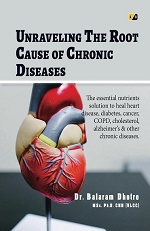Table of Contents
Introduction: Breaking Down Atherosclerosis
Atherosclerosis is the underlying cause of many cardiovascular diseases (CVDs) and remains one of the most studied medical conditions globally. According to insights provided by the PubMed article “Pathophysiology of Atherosclerosis,” the development of atherosclerosis is a stepwise process that involves endothelial dysfunction, immune responses, and plaque formation. Understanding these steps is essential for evaluating current interventions and preventive measures in cardiovascular health.
Step 1: Endothelial Dysfunction – The First Trigger
Keywords: endothelial damage, heart disease causes
Atherosclerosis begins with damage to the endothelium, the thin layer of cells lining the arteries. The PubMed article highlights how this dysfunction leads to increased permeability, allowing LDL cholesterol and other substances to infiltrate the arterial wall.
Causes of endothelial dysfunction include:
- Elevated LDL cholesterol levels
- Smoking and oxidative stress
- Chronic hypertension
- Systemic inflammation
When the endothelium is impaired, the protective barrier of the artery becomes compromised, setting the stage for plaque formation.
Step 2: LDL Oxidation and Immune Response
Keywords: LDL oxidation, foam cell formation
The second critical step in atherosclerosis is the oxidation of LDL cholesterol, which triggers an inflammatory response. As explained in the PubMed article, oxidized LDL is recognized by the body as harmful, prompting macrophages to engulf it.
This leads to:
- Formation of foam cells: Macrophages filled with oxidized LDL form fatty streaks.
- Accumulation in the arterial wall: Foam cells combine with cholesterol deposits, initiating early plaque formation.
These immune responses, while protective in nature, inadvertently contribute to plaque development.
Step 3: Plaque Formation and Growth
Keywords: plaque buildup, restricted blood flow
Plaques consist of foam cells, cholesterol, calcium deposits, and other debris. According to the PubMed article, these plaques grow within the arterial wall, narrowing blood flow and reducing the artery’s elasticity.
Consequences of plaque growth:
- Restricted blood flow: Reduced oxygen delivery to the heart or brain.
- Symptomatic manifestations: Chest pain (angina), fatigue during exertion, or peripheral artery disease (PAD).
Plaques can remain stable for years but pose risks if they become unstable.
Step 4: Plaque Instability and Rupture
Keywords: plaque rupture, heart attack prevention
The final stage of atherosclerosis occurs when plaques develop thin fibrous caps, making them vulnerable to rupture. As described in the article, plaque rupture exposes the plaque contents to the bloodstream, causing clot formation (thrombosis).
Potential outcomes of plaque rupture:
- Complete blockage of an artery can lead to heart attack or stroke.
- Thrombotic complications may result in sudden and severe cardiovascular events.
This stage underscores why addressing plaque stability is critical for reducing heart disease risks.
Conclusion: Supporting Insights for Heart Disease Prevention
The pathophysiology of atherosclerosis, as outlined in the PubMed article “Pathophysiology of Atherosclerosis,” sheds light on the step-by-step progression of this condition. From endothelial dysfunction to plaque rupture, the process highlights the complexity of cardiovascular disease development.
While lowering LDL cholesterol is an important strategy, it must be combined with approaches that target endothelial health, immune responses, and plaque stability. By referencing scientific research and understanding the mechanisms at play, healthcare professionals and individuals can take more informed steps toward heart disease prevention.
——————————————————————————————————————————
Supplements like Lypro-C improve endothelial function.
——————————————————————————————————————–
References
Pathophysiology of Atherosclerosis: https://pmc.ncbi.nlm.nih.gov/articles/PMC8954705/
Sun H.-J., Wu Z.-Y., Nie X.-W., Bian J.-S. Role of Endothelial Dysfunction in Cardiovascular Diseases: The Link between Inflammation and Hydrogen Sulfide. Front. Pharmacol. 2020;10:1568. doi: 10.3389/fphar.2019.01568. [DOI] [PMC free article] [PubMed] [Google Scholar]
Verma S., Anderson T.J. Fundamentals of Endothelial Function for the Clinical Cardiologist. Circulation. 2002;105:546–549. doi: 10.1161/hc0502.104540. [DOI] [PubMed] [Google Scholar]
Verma S., Buchanan M.R., Anderson T.J. Endothelial Function Testing as a Biomarker of Vascular Disease. Circulation. 2003;108:2054–2059. doi: 10.1161/01.CIR.0000089191.72957.ED. [DOI] [PubMed] [Google Scholar]
.Ardestani S.B., Eftedal I., Pedersen M., Jeppesen P.B., Nørregaard R., Matchkov V.V. Endothelial dysfunction in small arteries and early signs of atherosclerosis in ApoE knockout rats. Sci. Rep. 2020;10:15296. doi: 10.1038/s41598-020-72338-3. [DOI] [PMC free article] [PubMed] [Google Scholar]
Mudau M., Genis A., Lochner A., Strijdom H. Endothelial dysfunction: The early predictor of atherosclerosis. Cardiovasc. J. Afr. 2012;23:222–231. doi: 10.5830/CVJA-2011-068. [DOI] [PMC free article] [PubMed] [Google Scholar]
Gordon E., Schimmel L., Frye M. The Importance of Mechanical Forces for In Vitro Endothelial Cell Biology. Front. Physiol. 2020;11:684. doi: 10.3389/fphys.2020.00684. [DOI] [PMC free article] [PubMed] [Google Scholar]
Gimbrone M.A., Jr., García-Cardeña G. Endothelial Cell Dysfunction and the Pathobiology of Atherosclerosis. Circ. Res. 2016;118:620 636. doi: 10.1161/CIRCRESAHA.115.306301. [DOI] [PMC free article] [PubMed] [Google Scholar]


